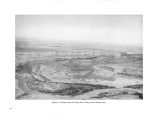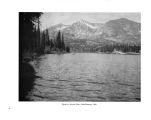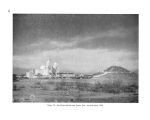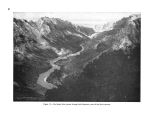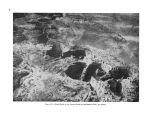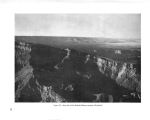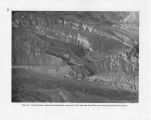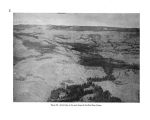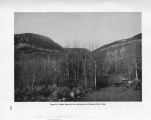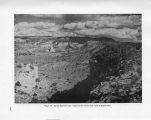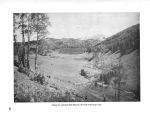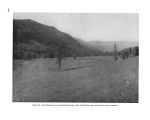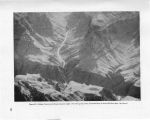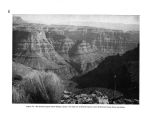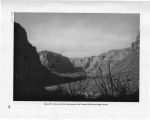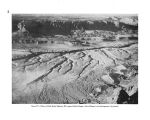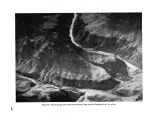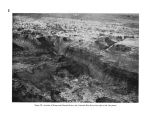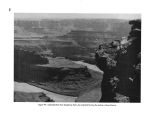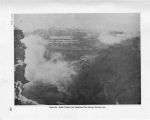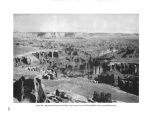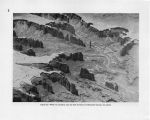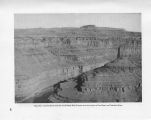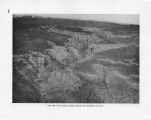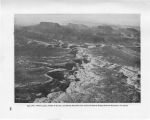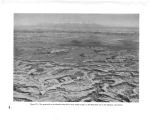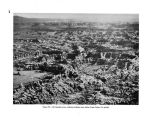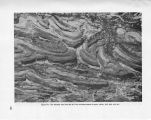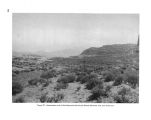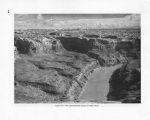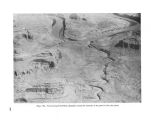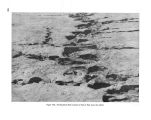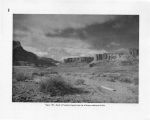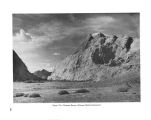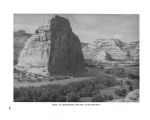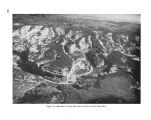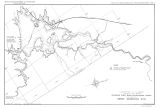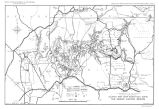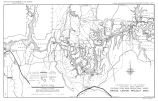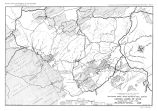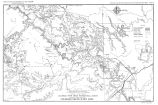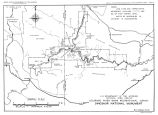| OCR Text |
Show The Chaves Pass Ruins include two large building blocks of pueblo type, a ball court, and remains of various smaller structures. The mesa point on which the main Chaves Pass Ruins are situated evidently was occupied more or less continuously from around 1100 A. D. until 1400 A. D. 7. Awatovi, site of the Mission of San Bernardino, is located on the north side of Jeddito Valley in the south central portion of the Hopi Indian Reservation near the settlement of Keams Canyon. It was one of the largest and most important of the sixteenth and seventeenth century villages of Tu- sayan, the first one reached by expeditions, and the one most often mentioned in early chronicles. The ruin is in fair condition and extends for a quarter of a mile along the mesa top, and back from the edge for a distance of 250 to 300 yards. Little survives of the mission, founded in 1629. Excavations have been carried on under the direction of the Peabody Museum of Harvard University. 8. The Blue Range area lying largely in Arizona, with a small part extending into New Mexico, includes more than 218,000 acres. It is one of the few remaining large areas of forest land in the Southwest still without roads. It is a region important for its big game and its trout streams, is accessible only by trails, and is the largest available area free from human occupancy and development in the State of Arizona. It extends into New Mexico to within a few miles of the Gila Primitive Area. The area is traversed from east to west by the Mogollon Rim, an abrupt escarpment- like topographic feature forming the southern boundary of the Colorado Plateau. The area above the rim is in the Boreal Zone, while below the rim is a wild and broken country largely in the Transition Zone. Elevations range from 4,500 to more than 9,100 feet. The area's major values are for the protection of the Gila and Salt River watersheds and for public recreation. 9. The Mount Baldy- White Mountain area in east central Arizona adjacent to United States Highways 666 and 73, ranges from 8,700 feet to 11,496 feet above sea level. The topography varies from gently sloping bench at the foot of Mount Baldy to extremely steep, rock- strewn mountainsides cut by deep canyons. Geological features of spectacular character, including numerous lofty peaks and deep canyons, offer great possibilities for recreational development in the White Mountain area. High altitudes with cool climate, well- forested surfaces, and numerous clear mountain streams where trout fishing is good all tend to make this an excellent summer resort area. Few other localities in Arizona are comparable in quality, and none is nearly as extensive. Development along recreational lines has been considerable during recent years, but only a beginning has been made in the construction of trail systems and camps. Ultimately, this area must be used to meet extensive needs and demands for summer recreation of the people living in the hot lowlands of Arizona. 10. San Franciscan volcanic field. Many geological features of unusual character and general interest are found in the San Francisco Mountains and the surrounding volcanic field. Because of the high altitude of the area, with resulting cool summer climate, this region offers tremendous possibilities for the development of attractive trails to features of scientific interest and for the interpretation of such features through appropriate signs or labels. A start in this direction has already been made by the Forest Service and the National Park Service in their respective areas, but much remains to be accomplished in the utilization of recreational possibilities. This area might be made into one of the fine recreational centers in the basin, especially for horseback riding and hiking. 11. The Mogollon Rim area is located south of United States Highway 66 and extends from a point southeast of Flagstaff, Ariz, to the White Mountains near the New Mexico line. The rim is the crest of the plateau that divides Arizona into two physiographic provinces- the Colorado Plateau on the north, and the basin and range province on the south. From the Mogollon Rim the drainage is north into the Little Colorado River and south into the Salt, Tonto, and Verde Rivers. The slope to the north is gradual for a distance of 50 miles. To the south the slope is rugged and abrupt, with a fall of 1,500 to 2,000 feet within a distance of a few miles. The greater part of the Mogollon Rim is heavily timbered, with ponderosa pine predominating. Near the crest one 210 |




























